
Macaw-LLM
Macaw-LLM: Multi-Modal Language Modeling with Image, Video, Audio, and Text Integration
Stars: 1573
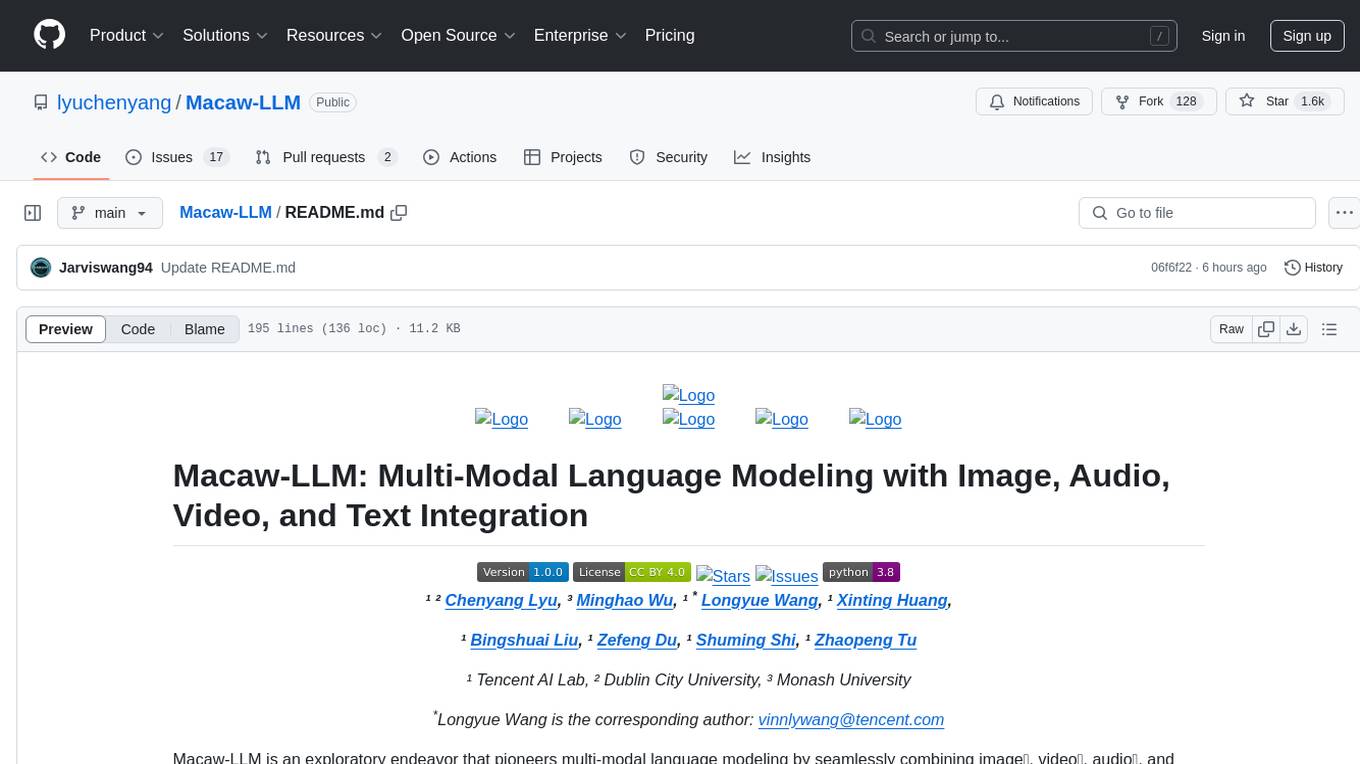
Macaw-LLM is a pioneering multi-modal language modeling tool that seamlessly integrates image, audio, video, and text data. It builds upon CLIP, Whisper, and LLaMA models to process and analyze multi-modal information effectively. The tool boasts features like simple and fast alignment, one-stage instruction fine-tuning, and a new multi-modal instruction dataset. It enables users to align multi-modal features efficiently, encode instructions, and generate responses across different data types.
README:





¹ ² Chenyang Lyu, ³ Minghao Wu, ¹ * Longyue Wang, ¹ Xinting Huang,
¹ Bingshuai Liu, ¹ Zefeng Du, ¹ Shuming Shi, ¹ Zhaopeng Tu
¹ Tencent AI Lab, ² Dublin City University, ³ Monash University
*Longyue Wang is the corresponding author: [email protected]
Macaw-LLM is an exploratory endeavor that pioneers multi-modal language modeling by seamlessly combining image🖼️, video📹, audio🎵, and text📝 data, built upon the foundations of CLIP, Whisper, and LLaMA.
📰 Paper 🏗️ Model (via dropbox) 🏗️ Model (via weiyun) 🗃️ Dataset 🧱 Code 🧐 Video 🧑💻 Demo
- Introduction
- Key Features
- Architecture
- Alignment Strategy
- Installation
- Usage
- Future Work and Contributions
In recent years, the field of language modeling has witnessed remarkable advancements. However, the integration of multiple modalities, such as images, videos, audios, and text, has remained a challenging task. Macaw-LLM is a model of its kind, bringing together state-of-the-art models for processing visual, auditory, and textual information, namely CLIP, Whisper, and LLaMA.
Macaw-LLM boasts the following unique features:
- Simple & Fast Alignment: Macaw-LLM enables seamless integration of multi-modal data through simple and fast alignment to LLM embeddings. This efficient process ensures quick adaptation of diverse data types.
- One-Stage Instruction Fine-Tuning: Our model streamlines the adaptation process through one-stage instruction fine-tuning, promoting a more efficient learning experience.
- New Multi-modal Instruction Dataset: We create a new multi-modal instruction dataset that covers diverse instructional tasks leveraging image and video modalities, which facilitates future work on multi-modal LLMs.
Macaw-LLM is composed of three main components:
- CLIP: Responsible for encoding images and video frames.
- Whisper: Responsible for encoding audio data.
- LLM (LLaMA/Vicuna/Bloom): The language model that encodes instructions and generates responses.
The integration of these models allows Macaw-LLM to process and analyze multi-modal data effectively.
Our novel alignment strategy enables faster adaptation by efficiently bridging multi-modal features to textual features. The process involves:
- Encoding multi-modal features with CLIP and Whisper.
- Feeding the encoded features into an attention function, wherein the multi-modal features serve as the query and the embedding matrix of LLaMA as the key and value.
- Injecting the outputs into the input sequence (before instruction tokens) of LLaMA, allowing for a streamlined alignment process with minimal additional parameters.
To install Macaw-LLM, follow these steps:
# Clone the repository
git clone https://github.com/lyuchenyang/Macaw-LLM.git
# Change to the Macaw-LLM directory
cd Macaw-LLM
# Install required packages
pip install -r requirements.txt
# Install ffmpeg
yum install ffmpeg -y
# Install apex
git clone https://github.com/NVIDIA/apex.git
cd apex
python setup.py install
cd ..-
Downloading dataset:
- Text data: stanford_alpaca/alpaca_data.json
- Image data: COCO Dataset VQA Dataset
- Video data: Charades and Video Dialog
- Image instruction data: Macaw-LLM image instruction dataset
- Video instruction data: Macaw-LLM video instruction dataset
-
Dataset preprocessing:
- Place the data in three modalities to specific folders -
data/text/,data/image/,data/video/ - Extract frames and audio from videos:
python preprocess_data.py - Transform supervised data to dataset:
python preprocess_data_supervised.py - Transform unsupervised data to dataset:
python preprocess_data_unsupervised.py
- Place the data in three modalities to specific folders -
-
Training:
- Execute the training script (you can specify the training parameters inside):
./train.sh
- Execute the training script (you can specify the training parameters inside):
-
Inference:
- Execute the inference script (you can give any customized inputs inside):
./inference.sh
- Execute the inference script (you can give any customized inputs inside):
We present several examples that highlight the proficiency of our Macaw-LLM in understanding and following multi-modal instructions. These examples showcase our system's multi-modal ability to understand and generate responses based on images and videos. These examples demonstrate how our system comprehends visual content and produces high-quality, fluent responses in natural language conversations. Our system generates contextually relevant and informative answers to various questions about the image, demonstrating its capability to communicate about visual content naturally and fluently.
While our model is still in its early stages, we believe that Macaw-LLM paves the way for future research in the realm of multi-modal language modeling. The integration of diverse data modalities holds immense potential for pushing the boundaries of artificial intelligence and enhancing our understanding of complex real-world scenarios. By introducing Macaw-LLM, we hope to inspire further exploration and innovation in this exciting area of study.
We welcome contributions from the community to improve and expand Macaw-LLM's capabilities. 🤝
-
[ ] Evaluation: We show some examples showcasing the multi-modal ability of our Macaw-LLM. However, we acknowledge that these efforts may not be fully adequate for accurately and comprehensively demonstrate model capabilities. We aim to conduct extensive evaluation on our systems to evaluate its capability.
-
[ ] More Language Models: We aim to extend Macaw-LLM by incorporating additional language models like Dolly, BLOOM, T-5, etc. This will enable more robust and versatile processing and understanding of multi-modal data.
-
[ ] Multilingual Support: Our next step is to support multiple languages, moving towards true multi-modal and multilingual language models. We believe this will significantly broaden Macaw-LLM's applicability and enhance its understanding of diverse, global contexts.
We would like to express our gratitude to the following open-source projects for their valuable contributions to Macaw-LLM:
- Stanford Alpaca for providing the Alpaca dataset, which we used in our experiments.
- Parrot for providing a helpful implementation of the training of LLaMA.
- CLIP for providing a strong image and video encoding model.
- Whisper for providing a strong audio encoding model.
- LLaMA for providing a powerful LLM.
We would also like to thank the developers and maintainers of these projects for their dedication and hard work in making their projects open-source and accessible to the community.
@article{lyu2023macaw,
title={Macaw-LLM: Multi-Modal Language Modeling with Image, Audio, Video, and Text Integration},
author={Lyu, Chenyang and Wu, Minghao and Wang, Longyue and Huang, Xinting and Liu, Bingshuai and Du, Zefeng and Shi, Shuming and Tu, Zhaopeng},
journal={arXiv preprint arXiv:2306.09093},
year={2023}
}For Tasks:
Click tags to check more tools for each tasksFor Jobs:
Alternative AI tools for Macaw-LLM
Similar Open Source Tools

Macaw-LLM
Macaw-LLM is a pioneering multi-modal language modeling tool that seamlessly integrates image, audio, video, and text data. It builds upon CLIP, Whisper, and LLaMA models to process and analyze multi-modal information effectively. The tool boasts features like simple and fast alignment, one-stage instruction fine-tuning, and a new multi-modal instruction dataset. It enables users to align multi-modal features efficiently, encode instructions, and generate responses across different data types.
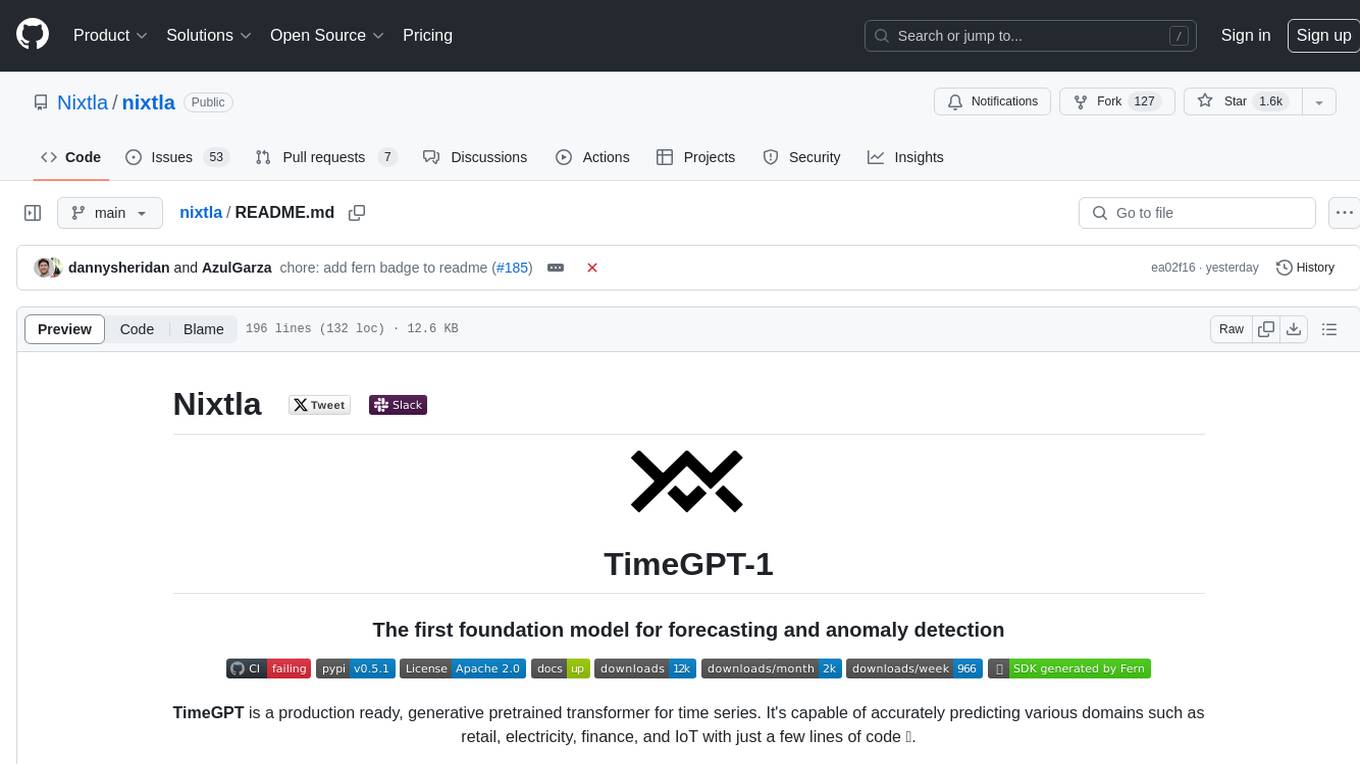
nixtla
Nixtla is a production-ready generative pretrained transformer for time series forecasting and anomaly detection. It can accurately predict various domains such as retail, electricity, finance, and IoT with just a few lines of code. TimeGPT introduces a paradigm shift with its standout performance, efficiency, and simplicity, making it accessible even to users with minimal coding experience. The model is based on self-attention and is independently trained on a vast time series dataset to minimize forecasting error. It offers features like zero-shot inference, fine-tuning, API access, adding exogenous variables, multiple series forecasting, custom loss function, cross-validation, prediction intervals, and handling irregular timestamps.
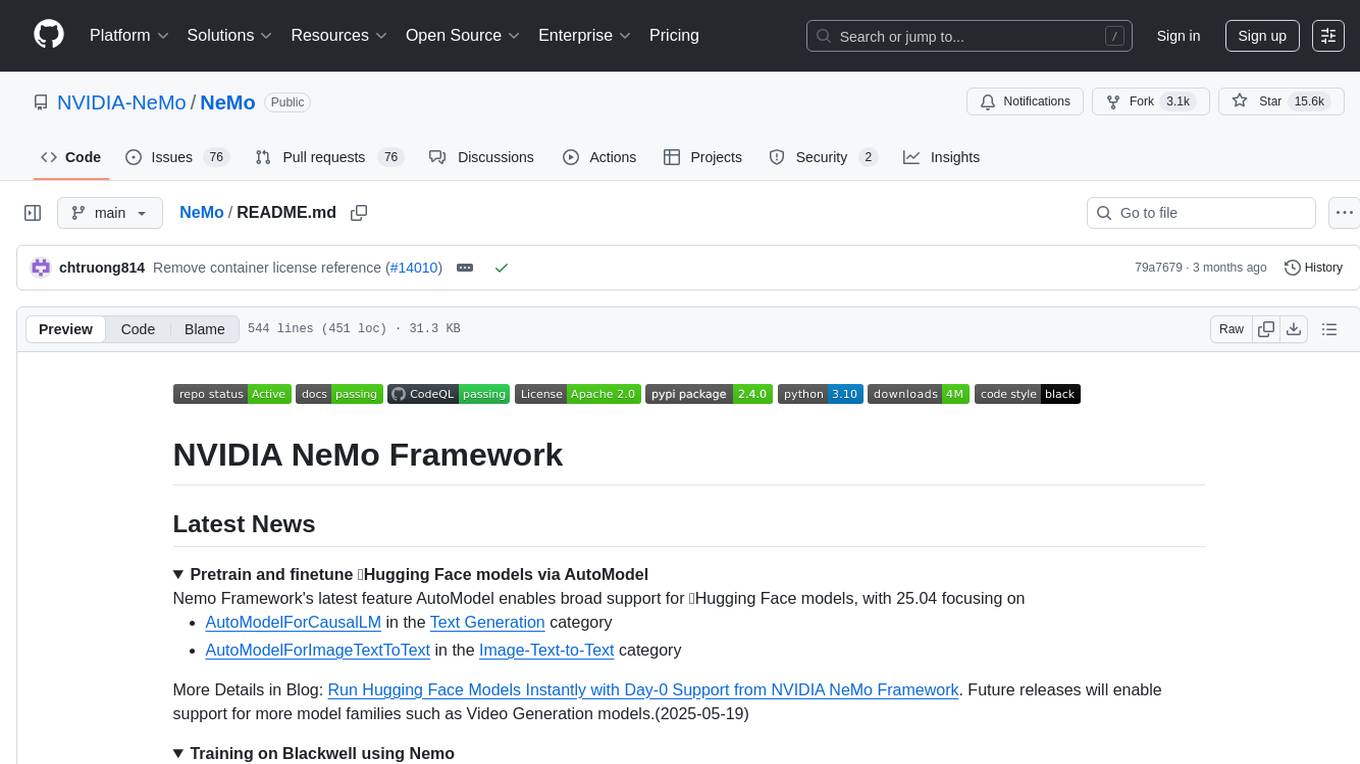
NeMo
NVIDIA NeMo Framework is a scalable and cloud-native generative AI framework built for researchers and PyTorch developers working on Large Language Models (LLMs), Multimodal Models (MMs), Automatic Speech Recognition (ASR), Text to Speech (TTS), and Computer Vision (CV) domains. It is designed to help you efficiently create, customize, and deploy new generative AI models by leveraging existing code and pre-trained model checkpoints.
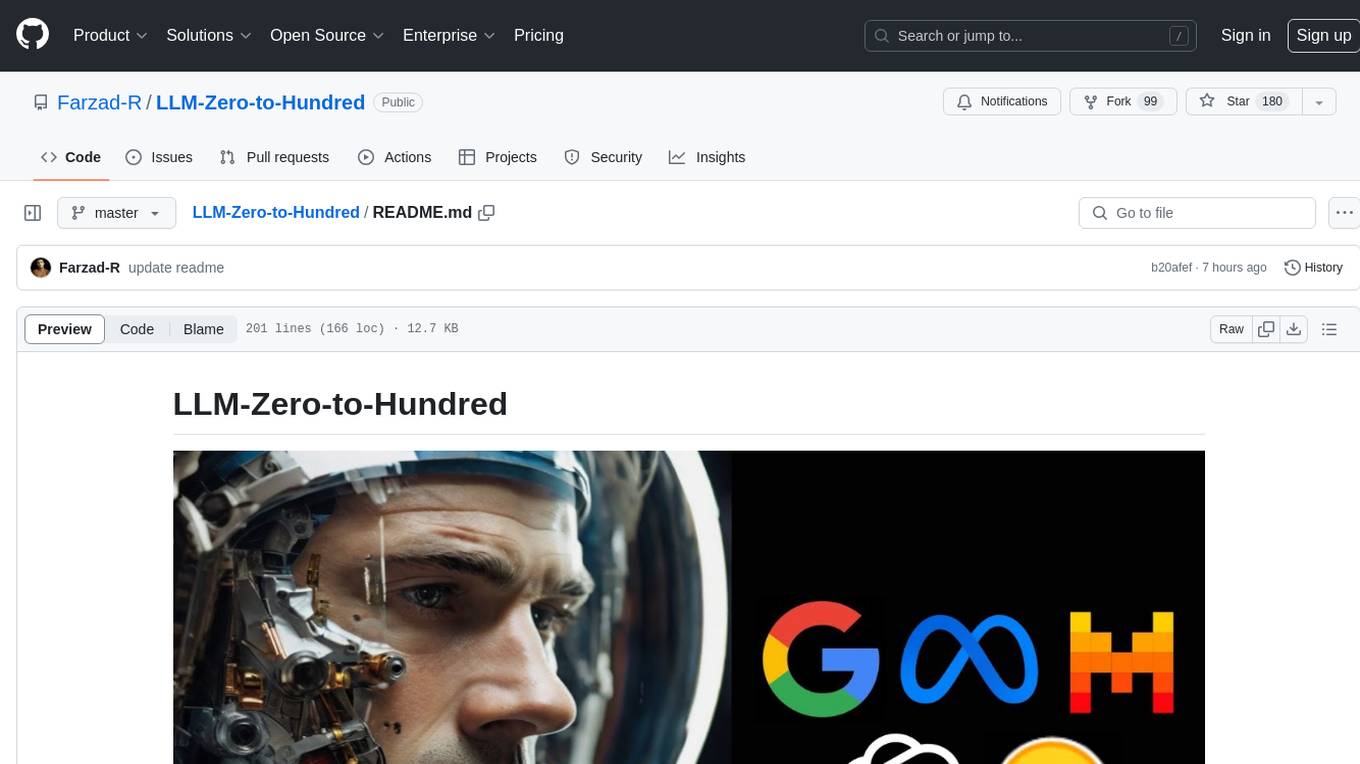
LLM-Zero-to-Hundred
LLM-Zero-to-Hundred is a repository showcasing various applications of LLM chatbots and providing insights into training and fine-tuning Language Models. It includes projects like WebGPT, RAG-GPT, WebRAGQuery, LLM Full Finetuning, RAG-Master LLamaindex vs Langchain, open-source-RAG-GEMMA, and HUMAIN: Advanced Multimodal, Multitask Chatbot. The projects cover features like ChatGPT-like interaction, RAG capabilities, image generation and understanding, DuckDuckGo integration, summarization, text and voice interaction, and memory access. Tutorials include LLM Function Calling and Visualizing Text Vectorization. The projects have a general structure with folders for README, HELPER, .env, configs, data, src, images, and utils.
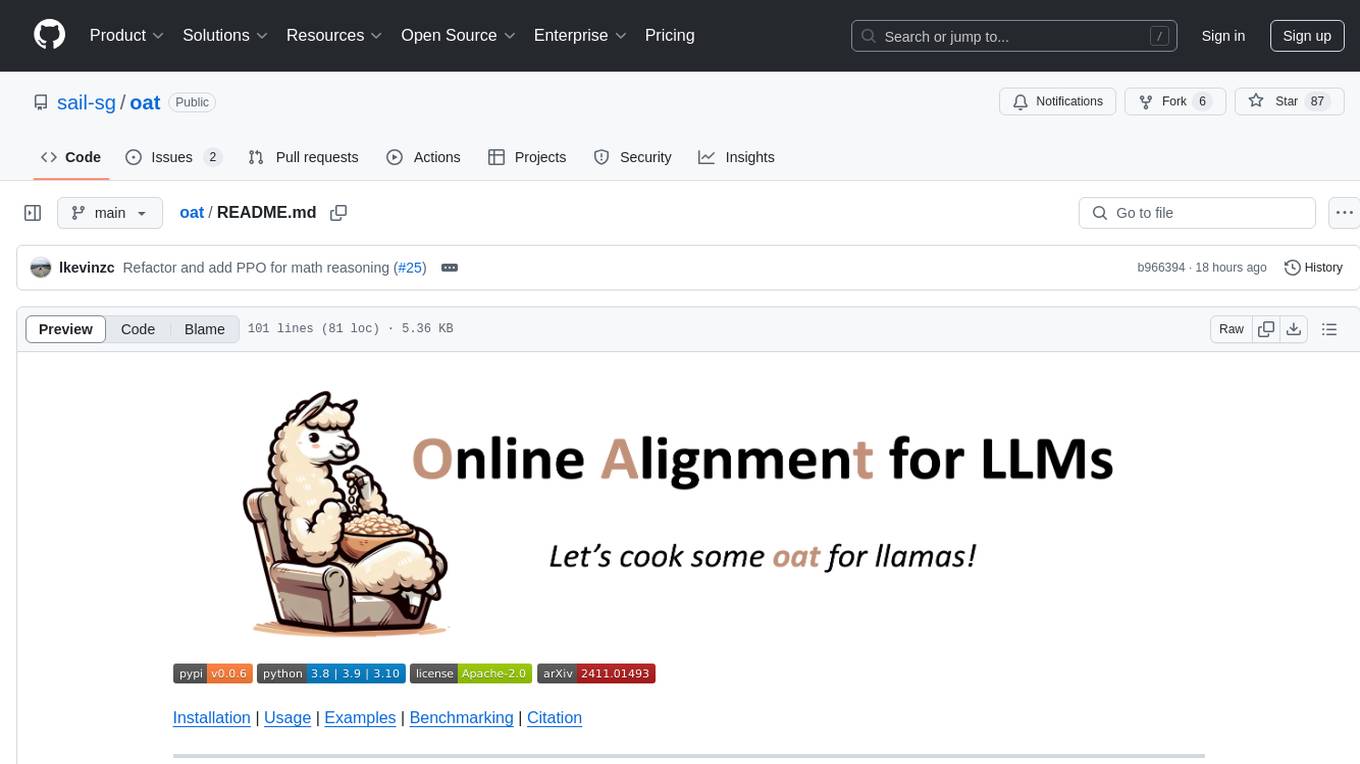
oat
Oat is a simple and efficient framework for running online LLM alignment algorithms. It implements a distributed Actor-Learner-Oracle architecture, with components optimized using state-of-the-art tools. Oat simplifies the experimental pipeline of LLM alignment by serving an Oracle online for preference data labeling and model evaluation. It provides a variety of oracles for simulating feedback and supports verifiable rewards. Oat's modular structure allows for easy inheritance and modification of classes, enabling rapid prototyping and experimentation with new algorithms. The framework implements cutting-edge online algorithms like PPO for math reasoning and various online exploration algorithms.
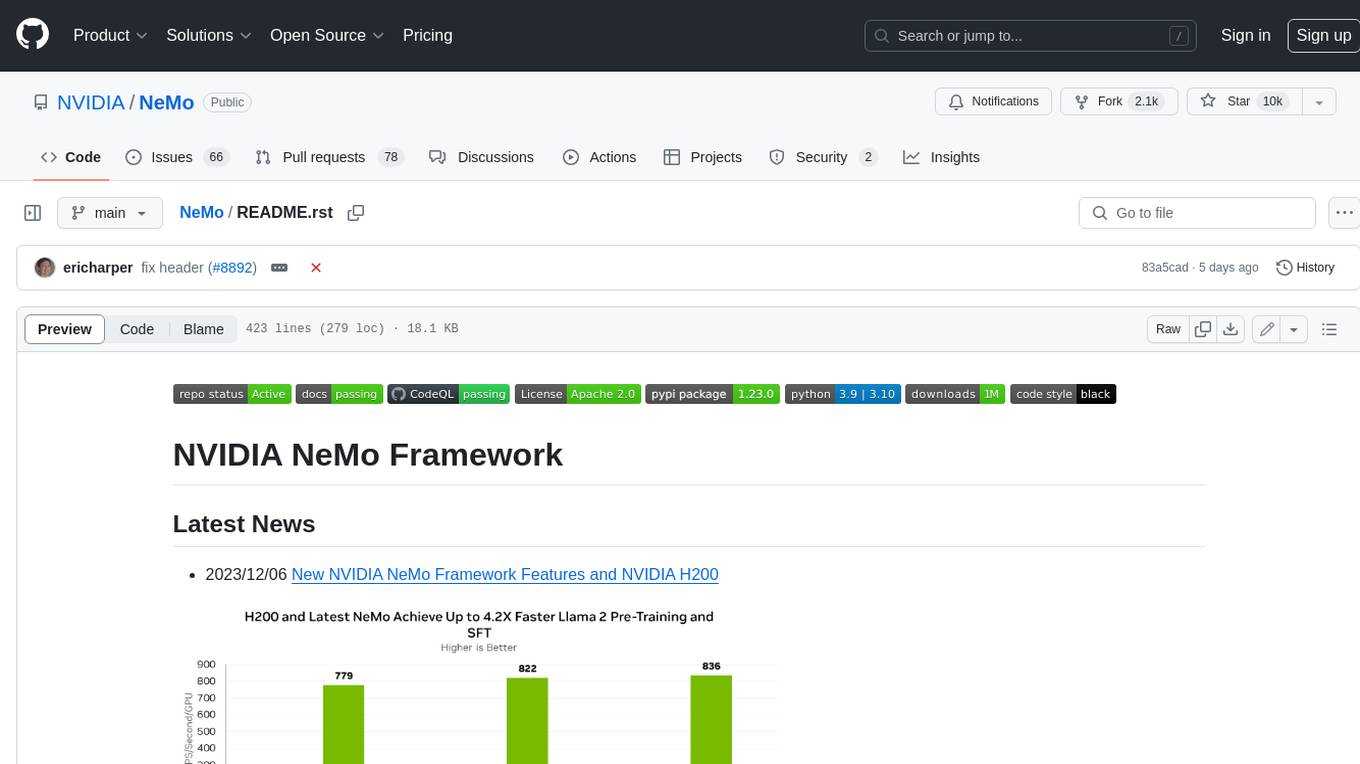
NeMo
NeMo Framework is a generative AI framework built for researchers and pytorch developers working on large language models (LLMs), multimodal models (MM), automatic speech recognition (ASR), and text-to-speech synthesis (TTS). The primary objective of NeMo is to provide a scalable framework for researchers and developers from industry and academia to more easily implement and design new generative AI models by being able to leverage existing code and pretrained models.
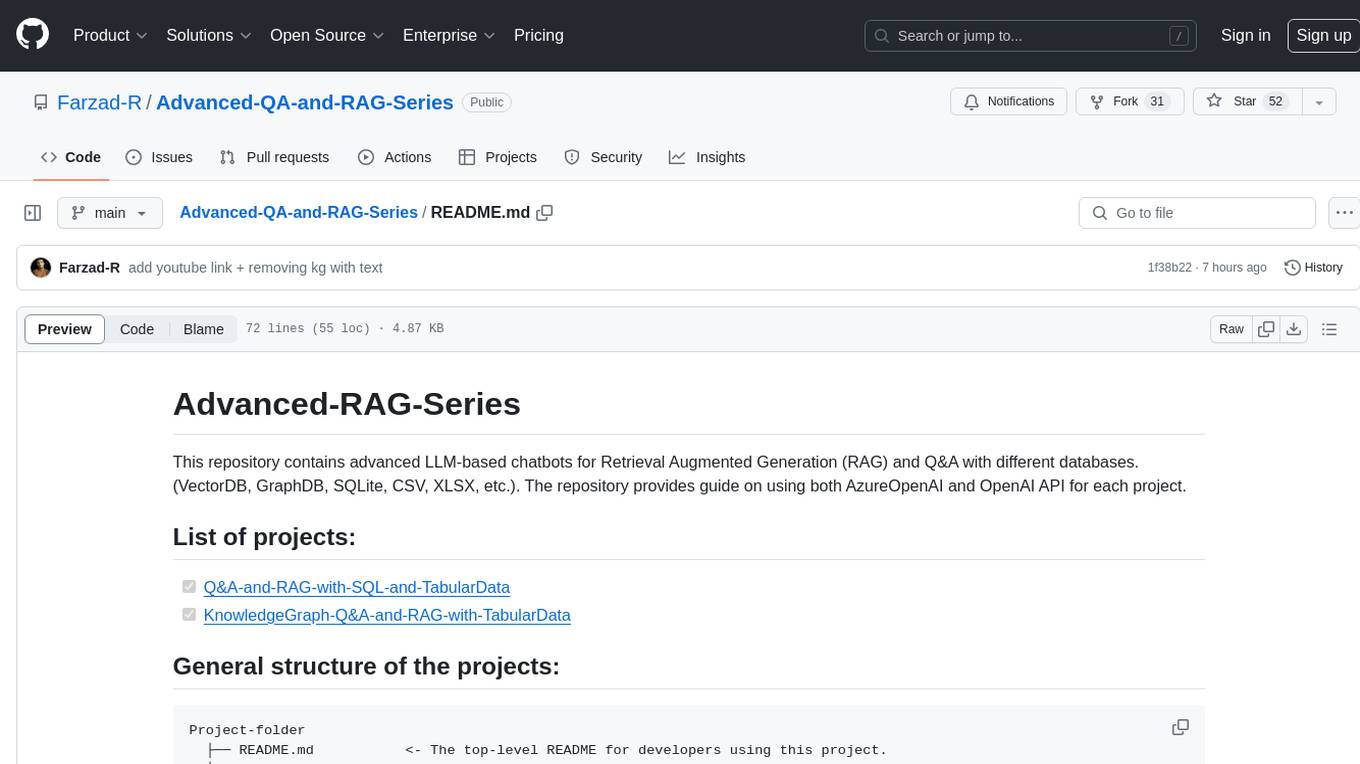
Advanced-QA-and-RAG-Series
This repository contains advanced LLM-based chatbots for Retrieval Augmented Generation (RAG) and Q&A with different databases. It provides guides on using AzureOpenAI and OpenAI API for each project. The projects include Q&A and RAG with SQL and Tabular Data, and KnowledgeGraph Q&A and RAG with Tabular Data. Key notes emphasize the importance of good column names, read-only database access, and familiarity with query languages. The chatbots allow users to interact with SQL databases, CSV, XLSX files, and graph databases using natural language.
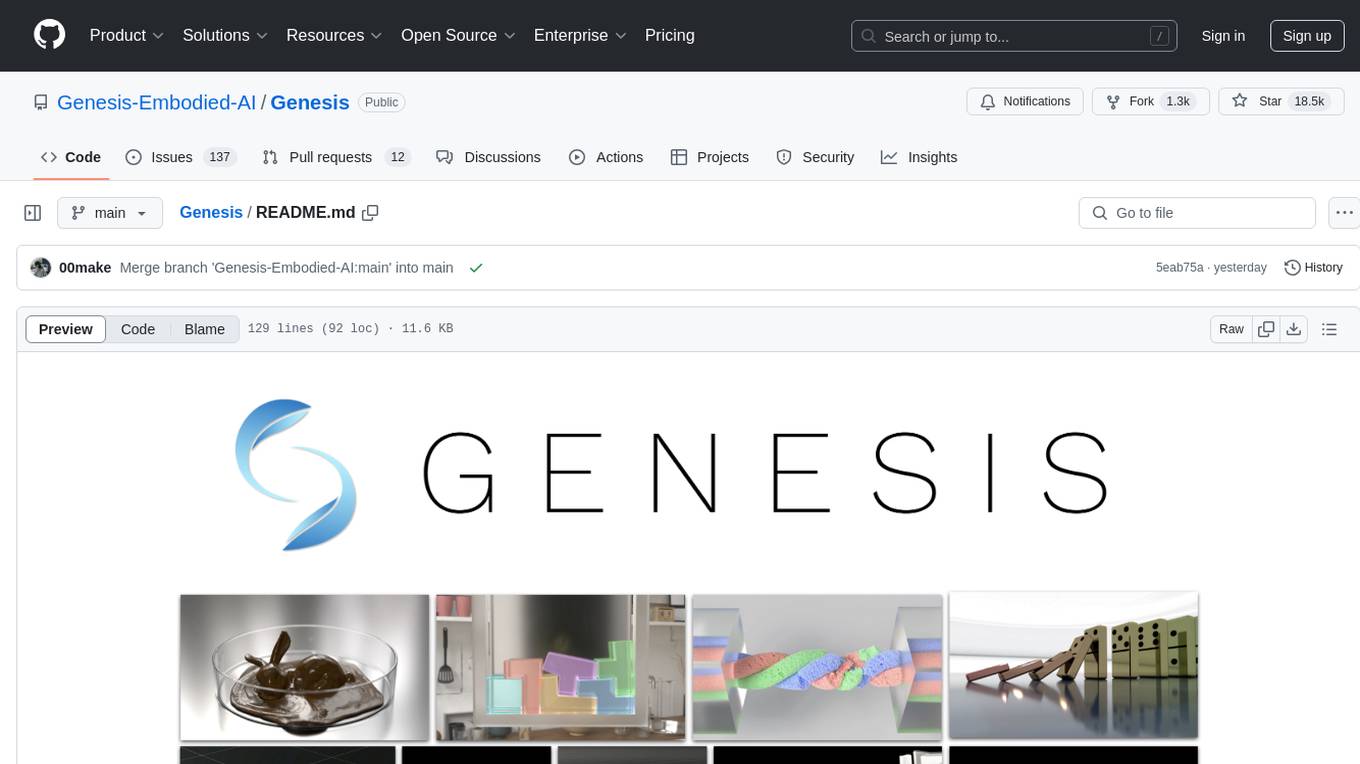
Genesis
Genesis is a physics platform designed for general purpose Robotics/Embodied AI/Physical AI applications. It includes a universal physics engine, a lightweight, ultra-fast, pythonic, and user-friendly robotics simulation platform, a powerful and fast photo-realistic rendering system, and a generative data engine that transforms user-prompted natural language description into various modalities of data. It aims to lower the barrier to using physics simulations, unify state-of-the-art physics solvers, and minimize human effort in collecting and generating data for robotics and other domains.
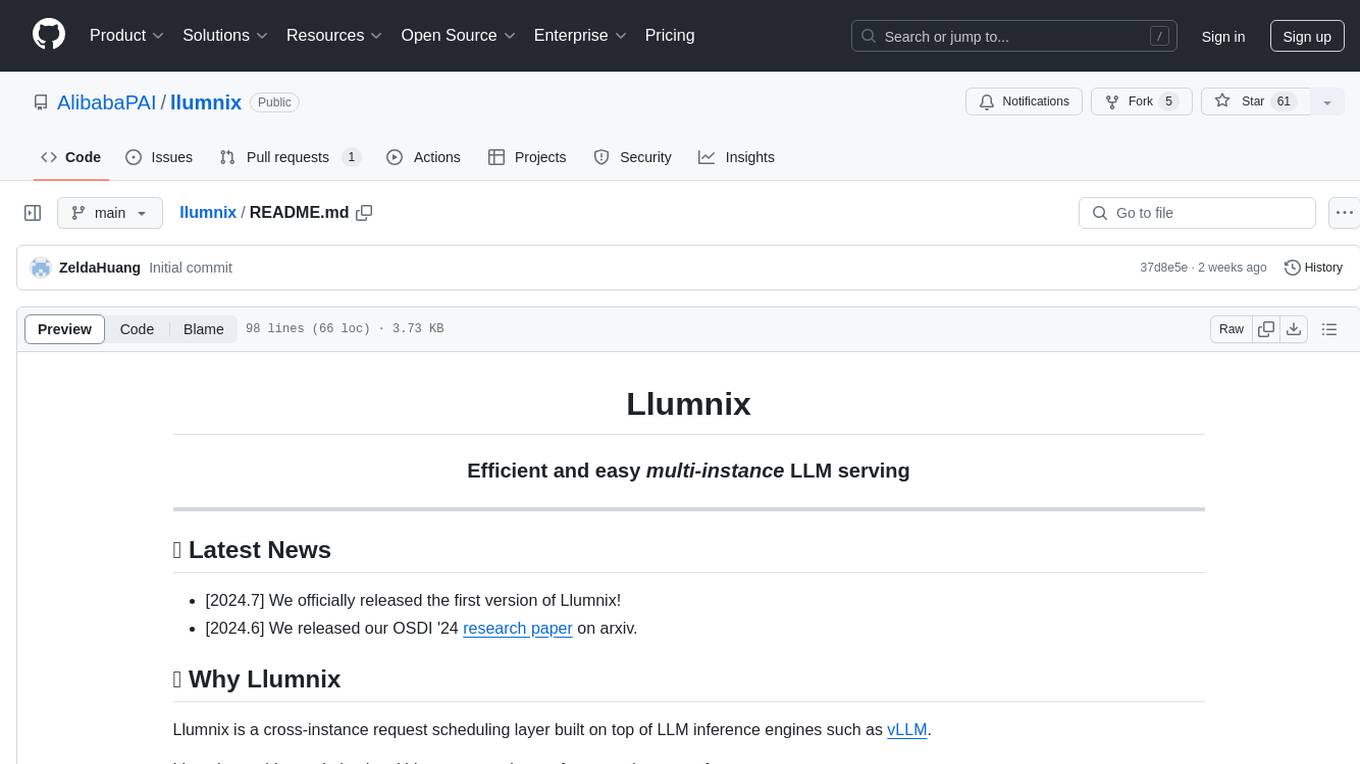
llumnix
Llumnix is a cross-instance request scheduling layer built on top of LLM inference engines such as vLLM, providing optimized multi-instance serving performance with low latency, reduced time-to-first-token (TTFT) and queuing delays, reduced time-between-tokens (TBT) and preemption stalls, and high throughput. It achieves this through dynamic, fine-grained, KV-cache-aware scheduling, continuous rescheduling across instances, KV cache migration mechanism, and seamless integration with existing multi-instance deployment platforms. Llumnix is easy to use, fault-tolerant, elastic, and extensible to more inference engines and scheduling policies.
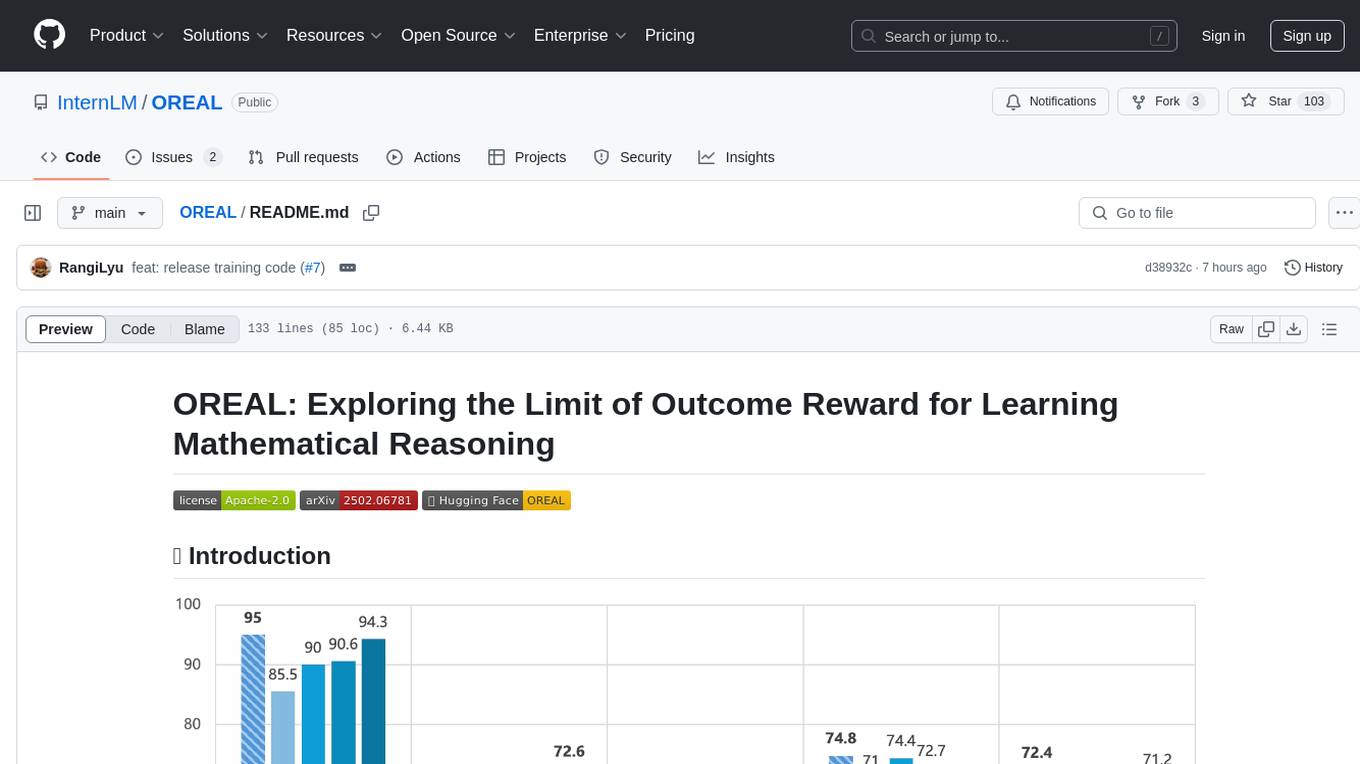
OREAL
OREAL is a reinforcement learning framework designed for mathematical reasoning tasks, aiming to achieve optimal performance through outcome reward-based learning. The framework utilizes behavior cloning, reshaping rewards, and token-level reward models to address challenges in sparse rewards and partial correctness. OREAL has achieved significant results, with a 7B model reaching 94.0 pass@1 accuracy on MATH-500 and surpassing previous 32B models. The tool provides training tutorials and Hugging Face model repositories for easy access and implementation.
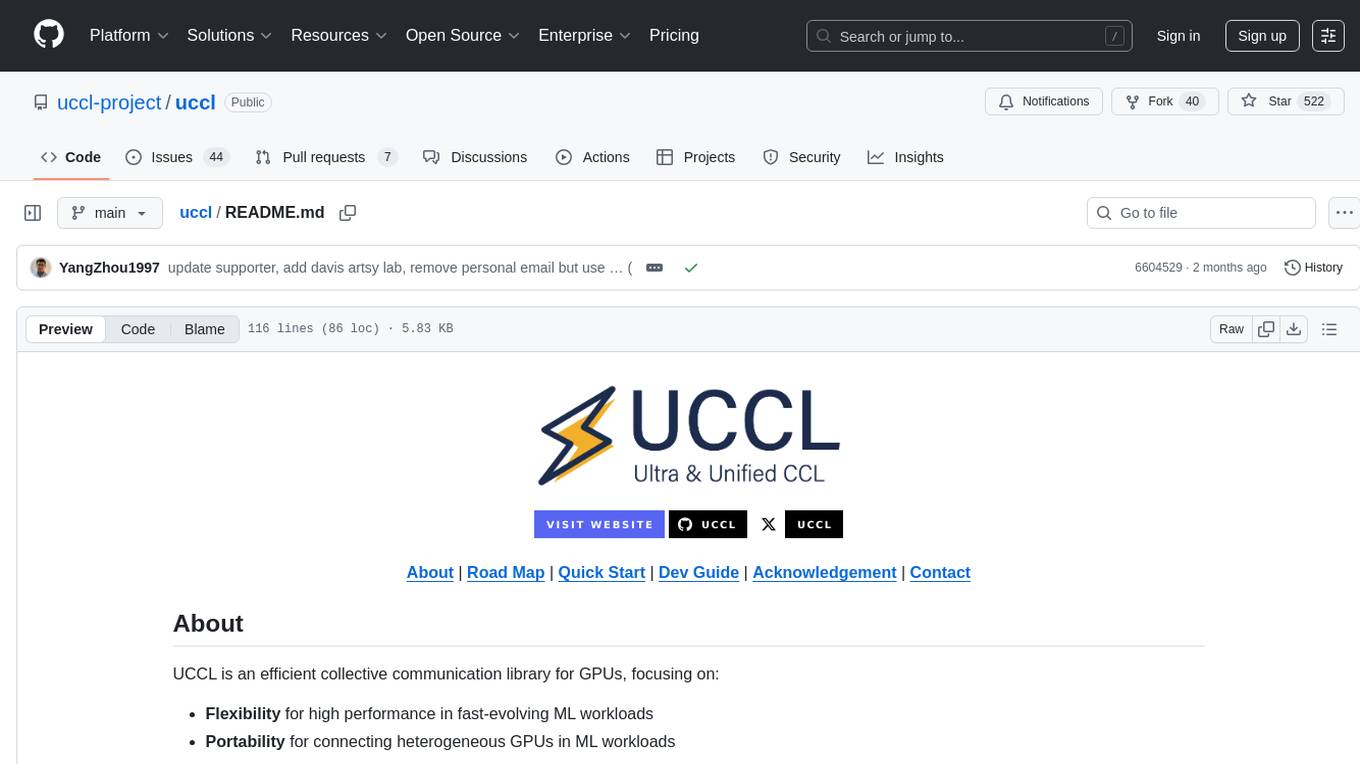
uccl
UCCL is a command-line utility tool designed to simplify the process of converting Unix-style file paths to Windows-style file paths and vice versa. It provides a convenient way for developers and system administrators to handle file path conversions without the need for manual adjustments. With UCCL, users can easily convert file paths between different operating systems, making it a valuable tool for cross-platform development and file management tasks.
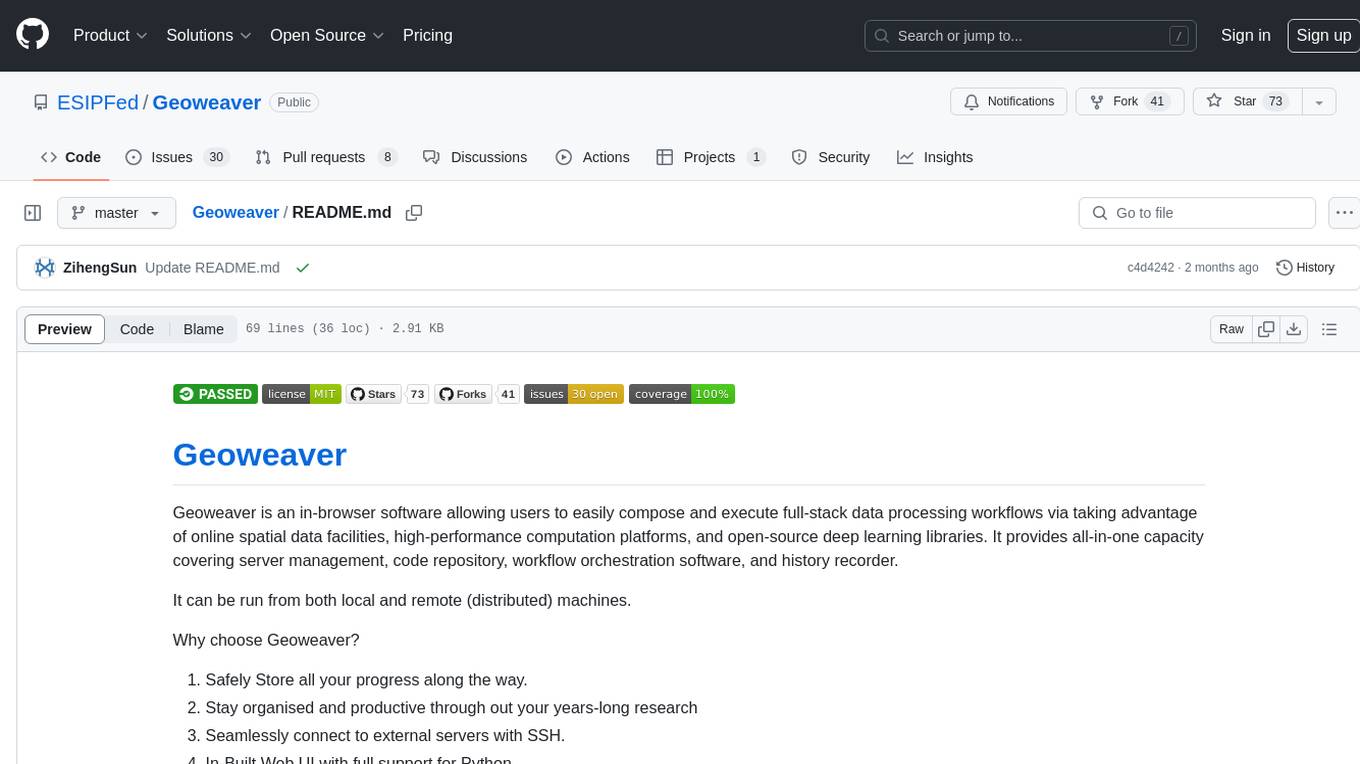
Geoweaver
Geoweaver is an in-browser software that enables users to easily compose and execute full-stack data processing workflows using online spatial data facilities, high-performance computation platforms, and open-source deep learning libraries. It provides server management, code repository, workflow orchestration software, and history recording capabilities. Users can run it from both local and remote machines. Geoweaver aims to make data processing workflows manageable for non-coder scientists and preserve model run history. It offers features like progress storage, organization, SSH connection to external servers, and a web UI with Python support.

HPT
Hyper-Pretrained Transformers (HPT) is a novel multimodal LLM framework from HyperGAI, trained for vision-language models capable of understanding both textual and visual inputs. The repository contains the open-source implementation of inference code to reproduce the evaluation results of HPT Air on different benchmarks. HPT has achieved competitive results with state-of-the-art models on various multimodal LLM benchmarks. It offers models like HPT 1.5 Air and HPT 1.0 Air, providing efficient solutions for vision-and-language tasks.
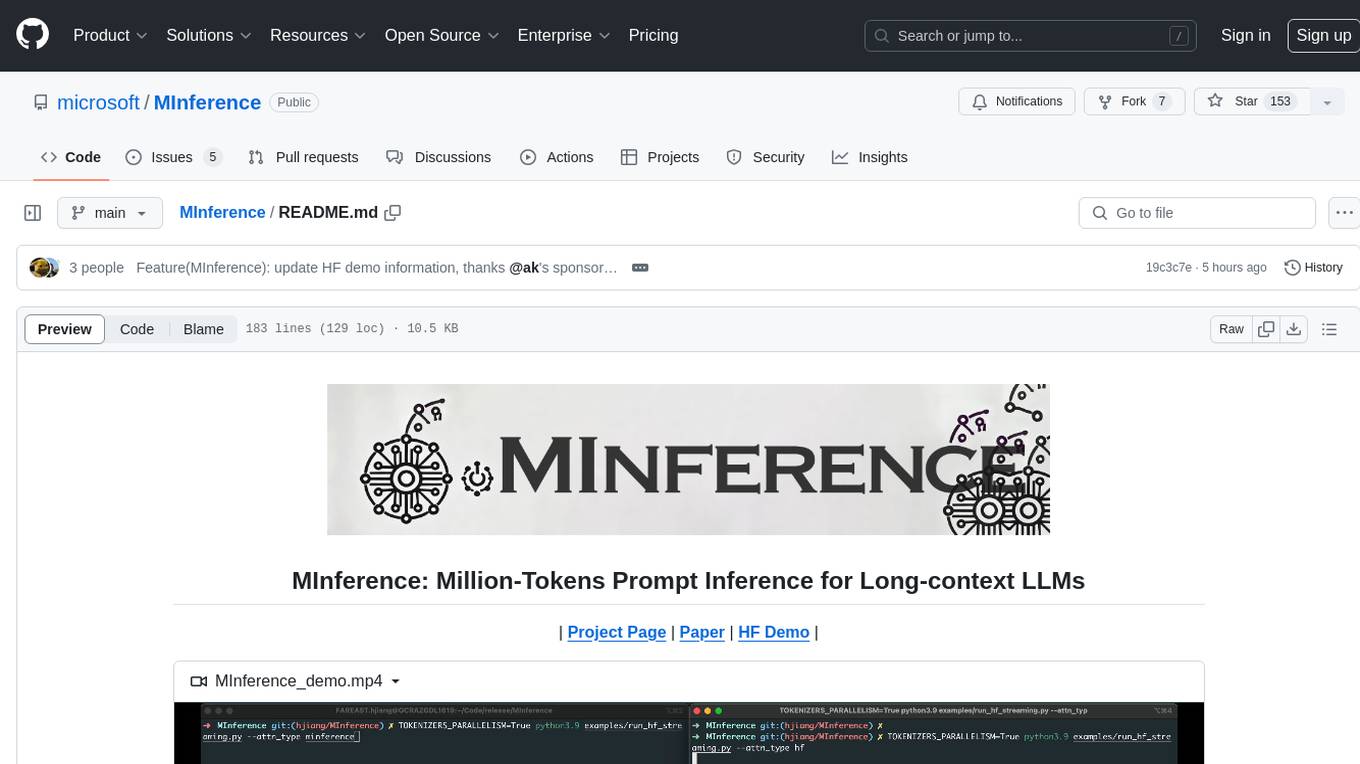
MInference
MInference is a tool designed to accelerate pre-filling for long-context Language Models (LLMs) by leveraging dynamic sparse attention. It achieves up to a 10x speedup for pre-filling on an A100 while maintaining accuracy. The tool supports various decoding LLMs, including LLaMA-style models and Phi models, and provides custom kernels for attention computation. MInference is useful for researchers and developers working with large-scale language models who aim to improve efficiency without compromising accuracy.
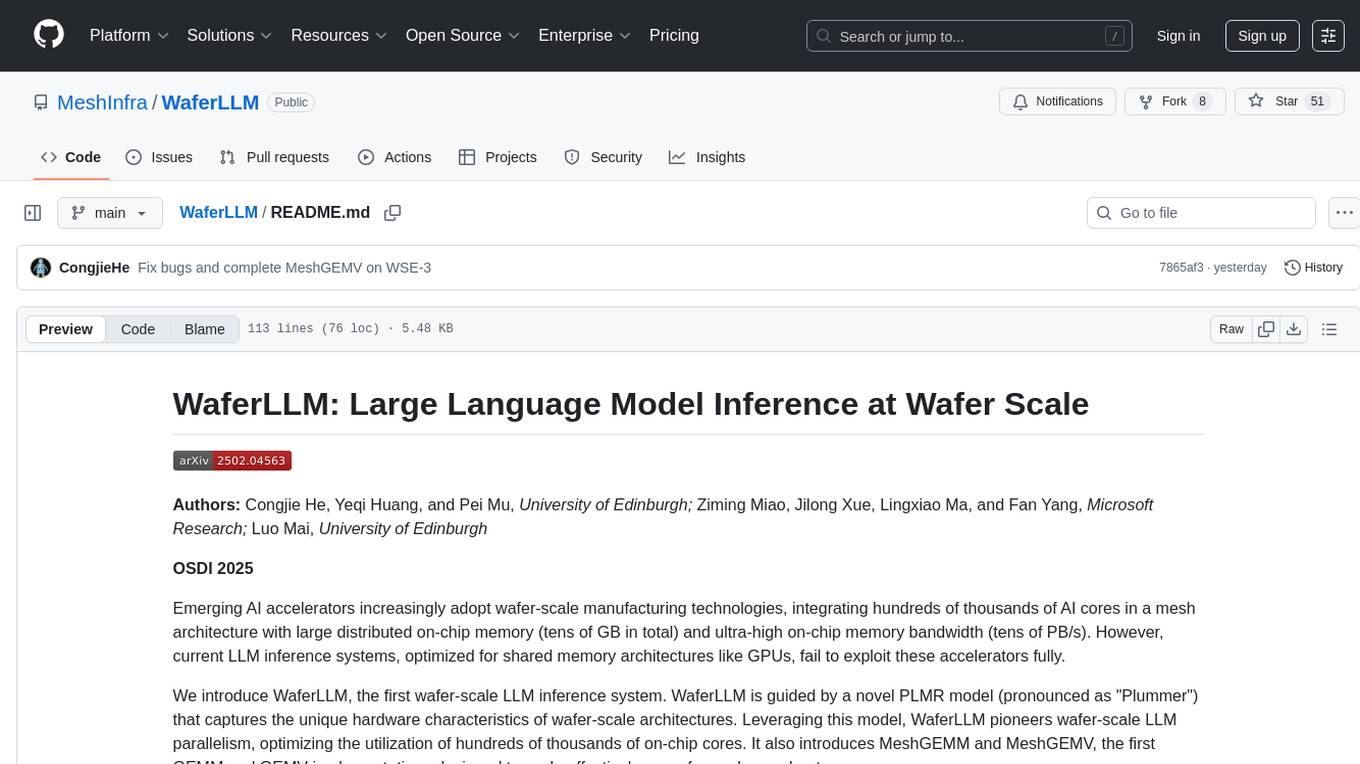
WaferLLM
WaferLLM is the first wafer-scale Large Language Model (LLM) inference system designed to optimize the utilization of hundreds of thousands of on-chip cores in wafer-scale accelerators. It introduces MeshGEMM and MeshGEMV implementations for effective scaling on wafer-scale architectures, achieving significantly higher accelerator utilization and speedups compared to state-of-the-art methods. Users need the Cerebras SDK to reproduce the results, and the project provides detailed documentation and scripts for running simulations on both simulator and actual hardware.
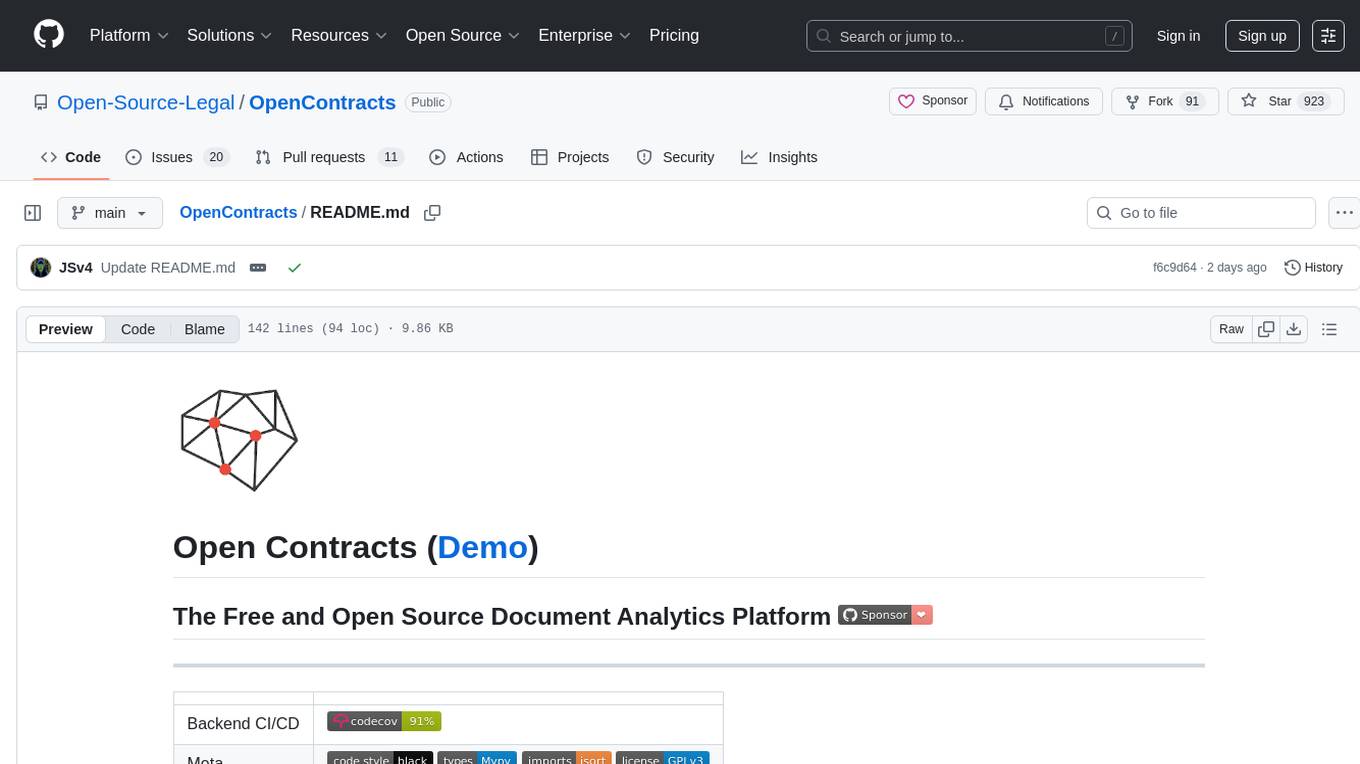
OpenContracts
OpenContracts is a free and open-source document analytics platform designed to empower knowledge owners and subject matter experts. It supports multiple document formats, ingestion pipelines, and custom document analytics tools. Users can manage documents, define metadata schemas, extract layout features, generate vector embeddings, deploy custom analyzers, support new document formats, annotate documents, extract bulk data, and create bespoke data extraction workflows. The tool aims to provide a standardized architecture for analyzing contracts and making data portable, with a focus on PDF and text-based formats. It includes features like document management, layout parsing, pluggable architectures, human annotation interface, and a custom LLM framework for conversation management and real-time streaming.
For similar tasks

Macaw-LLM
Macaw-LLM is a pioneering multi-modal language modeling tool that seamlessly integrates image, audio, video, and text data. It builds upon CLIP, Whisper, and LLaMA models to process and analyze multi-modal information effectively. The tool boasts features like simple and fast alignment, one-stage instruction fine-tuning, and a new multi-modal instruction dataset. It enables users to align multi-modal features efficiently, encode instructions, and generate responses across different data types.
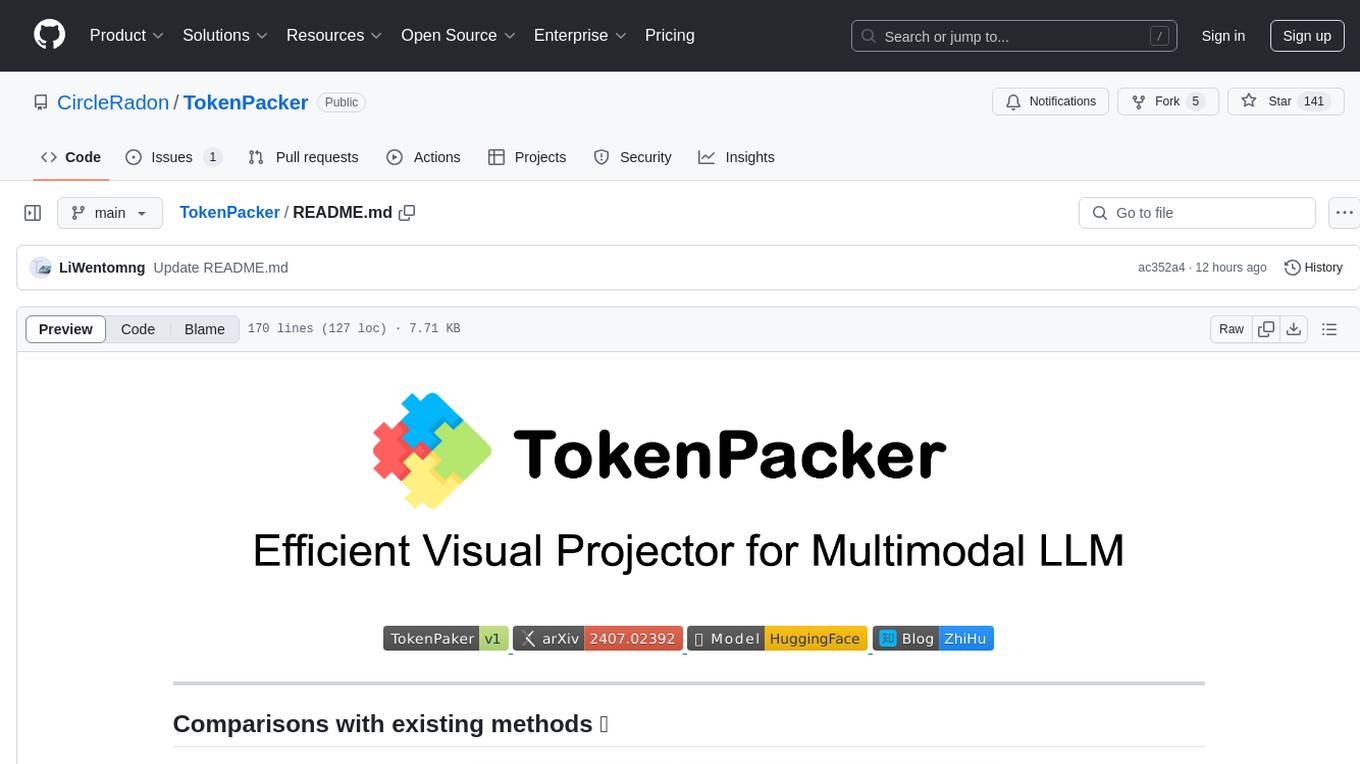
TokenPacker
TokenPacker is a novel visual projector that compresses visual tokens by 75%∼89% with high efficiency. It adopts a 'coarse-to-fine' scheme to generate condensed visual tokens, achieving comparable or better performance across diverse benchmarks. The tool includes TokenPacker for general use and TokenPacker-HD for high-resolution image understanding. It provides training scripts, checkpoints, and supports various compression ratios and patch numbers.
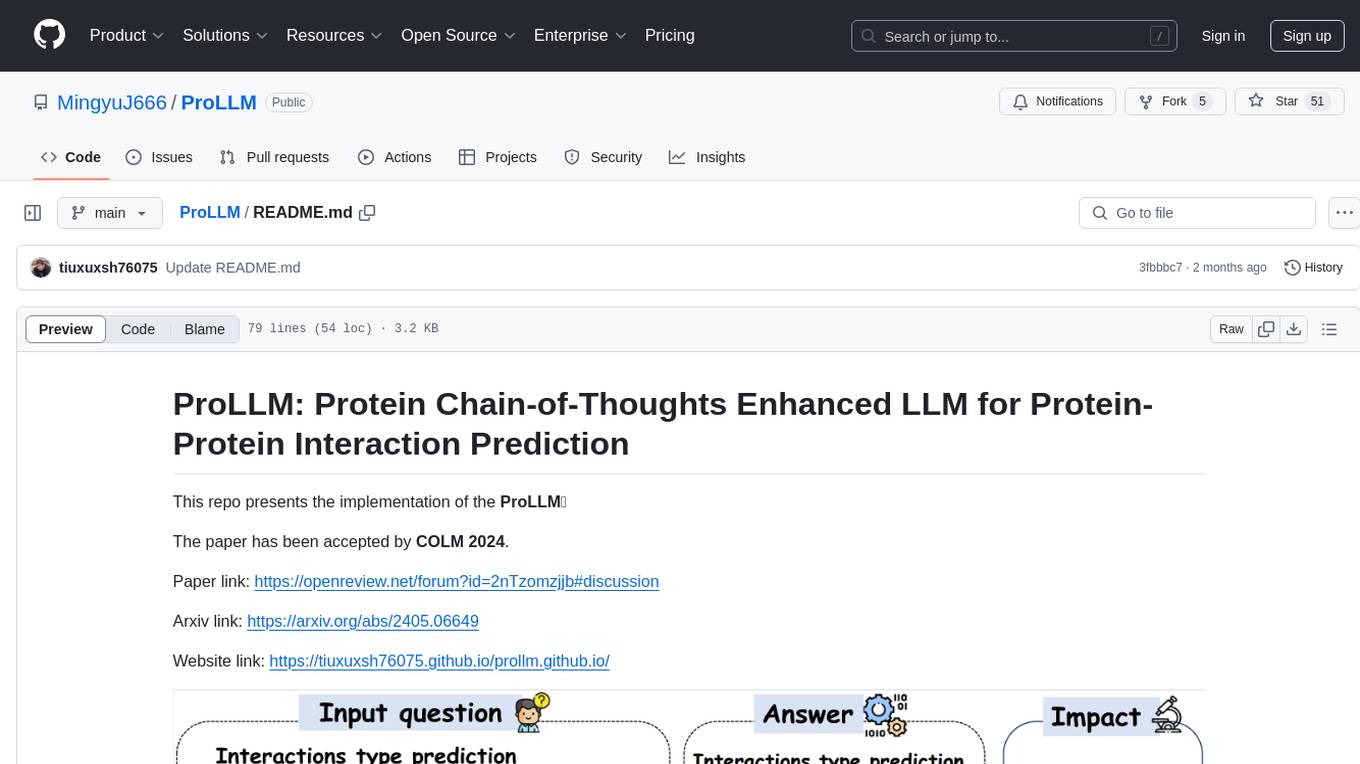
ProLLM
ProLLM is a framework that leverages Large Language Models to interpret and analyze protein sequences and interactions through natural language processing. It introduces the Protein Chain of Thought (ProCoT) method to transform complex protein interaction data into intuitive prompts, enhancing predictive accuracy by incorporating protein-specific embeddings and fine-tuning on domain-specific datasets.
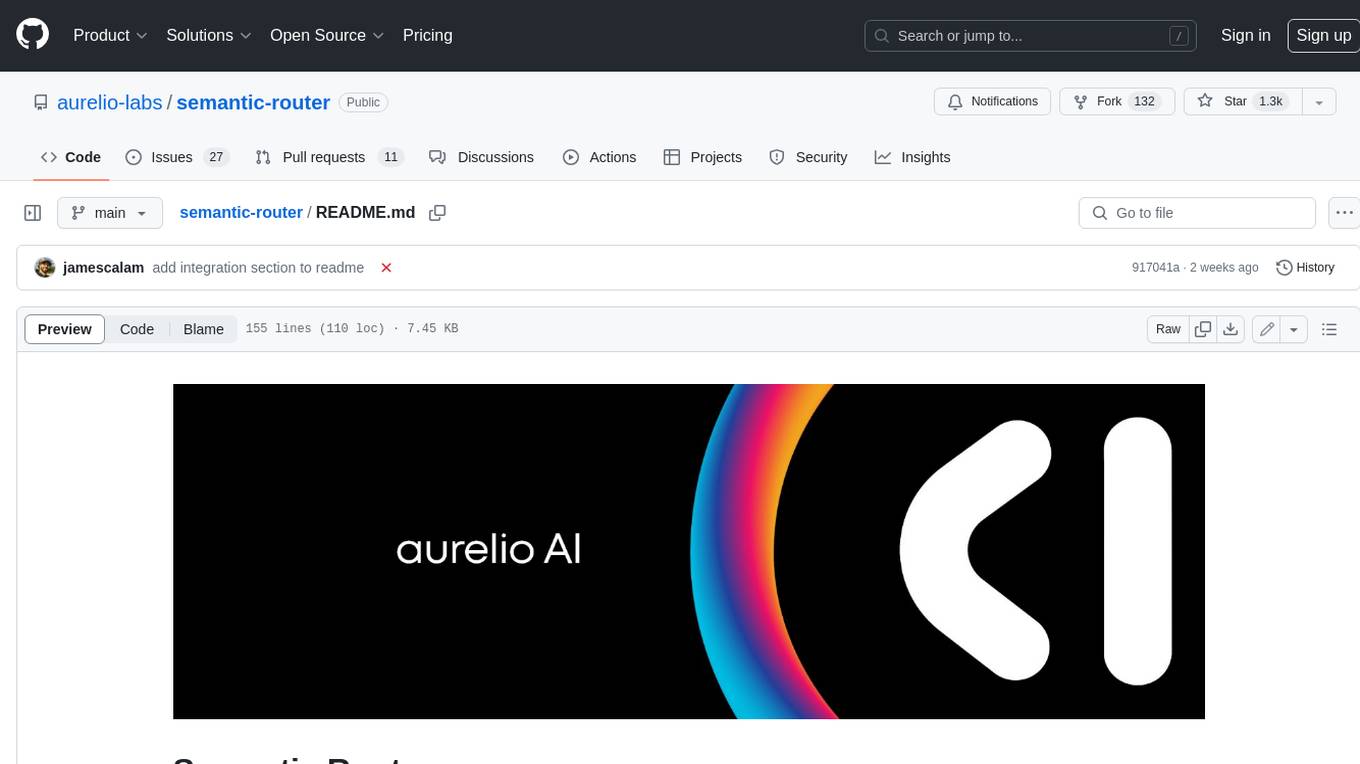
semantic-router
Semantic Router is a superfast decision-making layer for your LLMs and agents. Rather than waiting for slow LLM generations to make tool-use decisions, we use the magic of semantic vector space to make those decisions — _routing_ our requests using _semantic_ meaning.
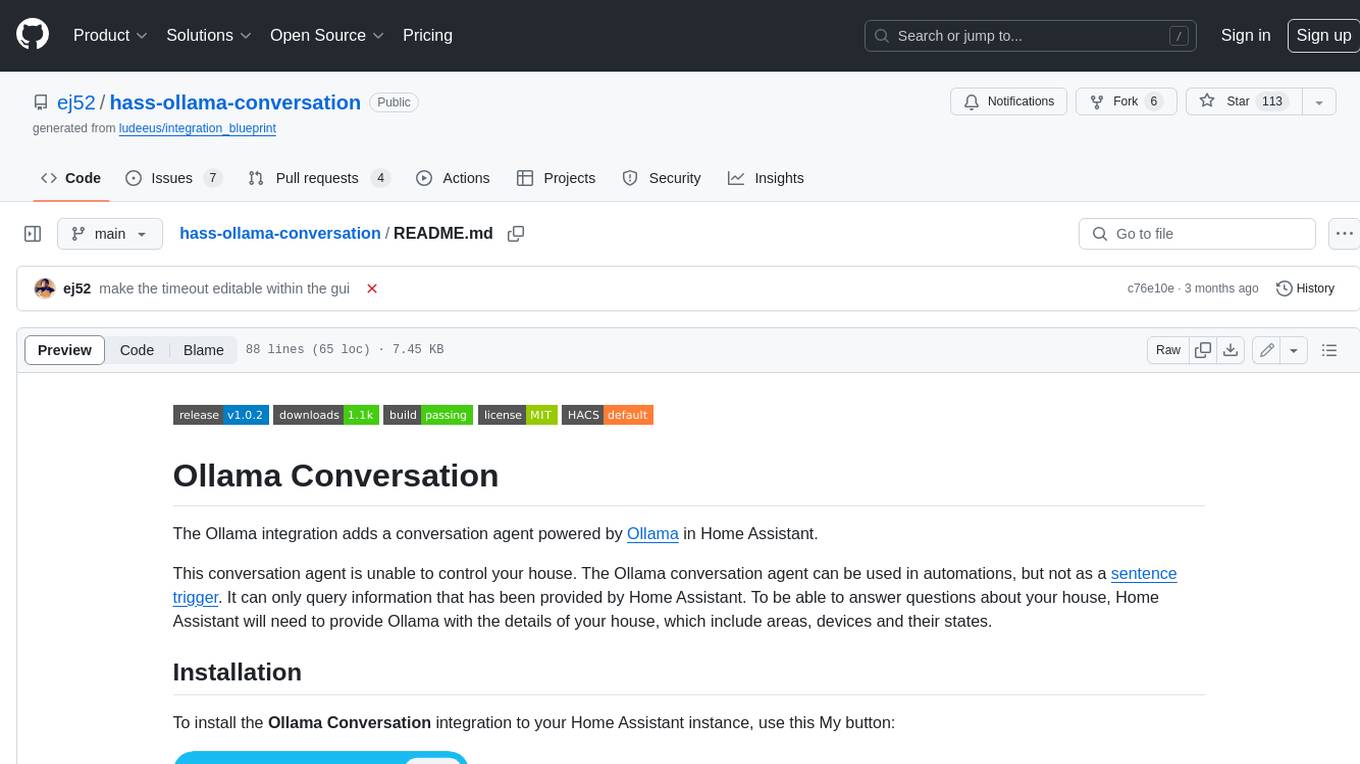
hass-ollama-conversation
The Ollama Conversation integration adds a conversation agent powered by Ollama in Home Assistant. This agent can be used in automations to query information provided by Home Assistant about your house, including areas, devices, and their states. Users can install the integration via HACS and configure settings such as API timeout, model selection, context size, maximum tokens, and other parameters to fine-tune the responses generated by the AI language model. Contributions to the project are welcome, and discussions can be held on the Home Assistant Community platform.
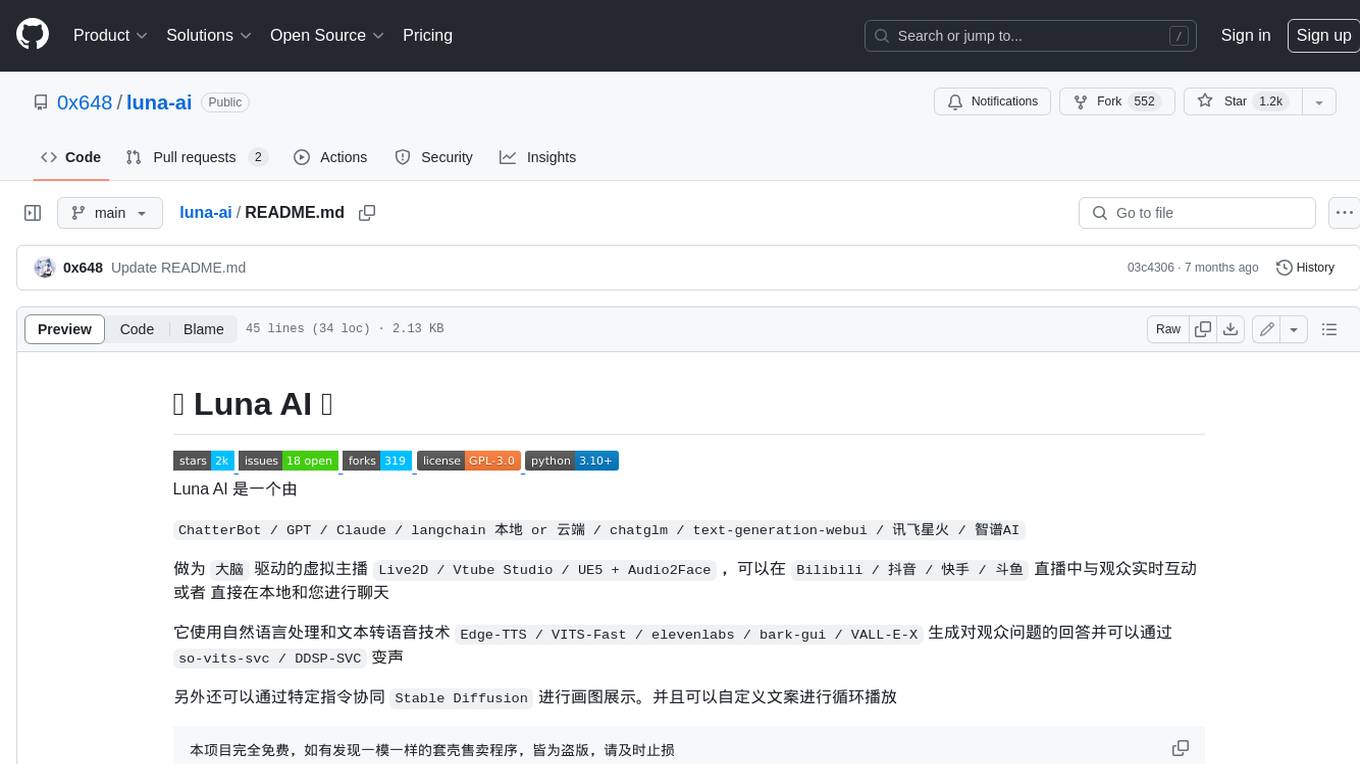
luna-ai
Luna AI is a virtual streamer driven by a 'brain' composed of ChatterBot, GPT, Claude, langchain, chatglm, text-generation-webui, 讯飞星火, 智谱AI. It can interact with viewers in real-time during live streams on platforms like Bilibili, Douyin, Kuaishou, Douyu, or chat with you locally. Luna AI uses natural language processing and text-to-speech technologies like Edge-TTS, VITS-Fast, elevenlabs, bark-gui, VALL-E-X to generate responses to viewer questions and can change voice using so-vits-svc, DDSP-SVC. It can also collaborate with Stable Diffusion for drawing displays and loop custom texts. This project is completely free, and any identical copycat selling programs are pirated, please stop them promptly.
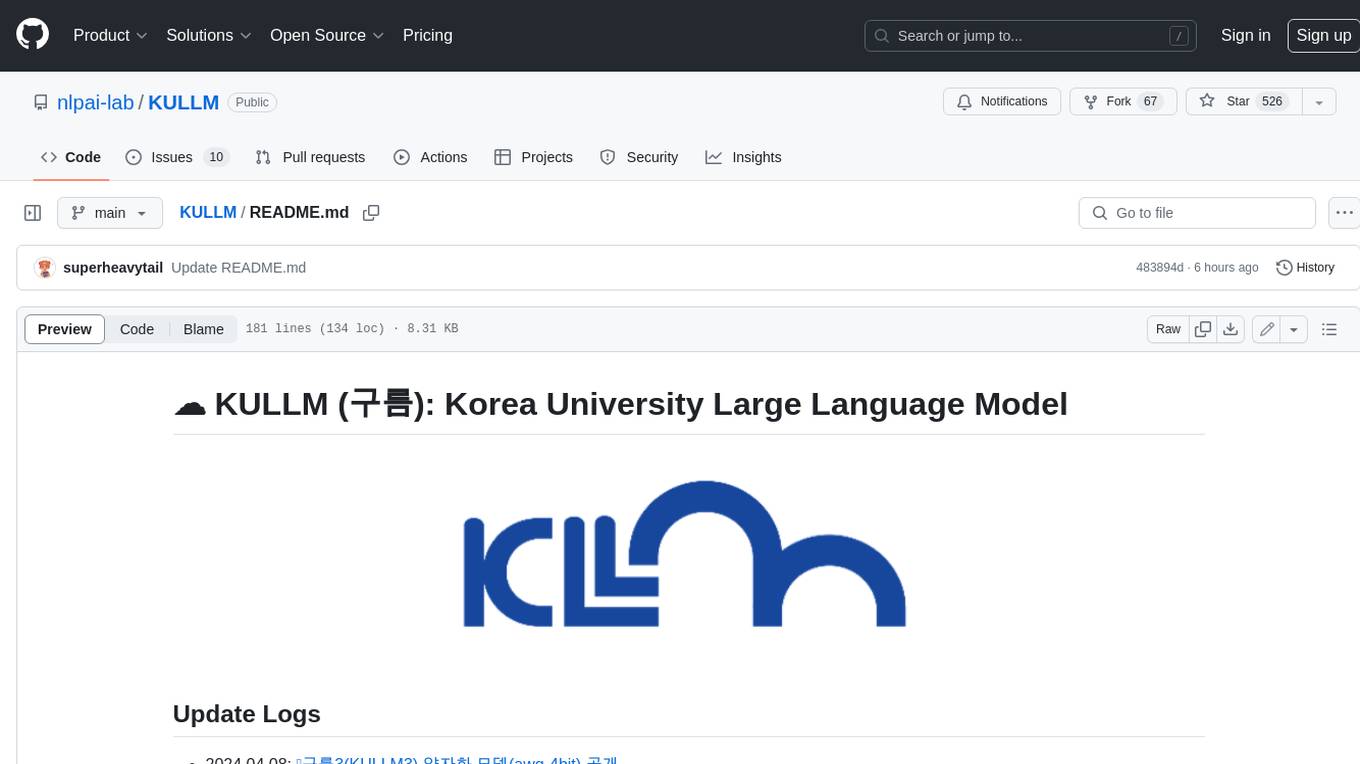
KULLM
KULLM (구름) is a Korean Large Language Model developed by Korea University NLP & AI Lab and HIAI Research Institute. It is based on the upstage/SOLAR-10.7B-v1.0 model and has been fine-tuned for instruction. The model has been trained on 8×A100 GPUs and is capable of generating responses in Korean language. KULLM exhibits hallucination and repetition phenomena due to its decoding strategy. Users should be cautious as the model may produce inaccurate or harmful results. Performance may vary in benchmarks without a fixed system prompt.

cria
Cria is a Python library designed for running Large Language Models with minimal configuration. It provides an easy and concise way to interact with LLMs, offering advanced features such as custom models, streams, message history management, and running multiple models in parallel. Cria simplifies the process of using LLMs by providing a straightforward API that requires only a few lines of code to get started. It also handles model installation automatically, making it efficient and user-friendly for various natural language processing tasks.
For similar jobs

weave
Weave is a toolkit for developing Generative AI applications, built by Weights & Biases. With Weave, you can log and debug language model inputs, outputs, and traces; build rigorous, apples-to-apples evaluations for language model use cases; and organize all the information generated across the LLM workflow, from experimentation to evaluations to production. Weave aims to bring rigor, best-practices, and composability to the inherently experimental process of developing Generative AI software, without introducing cognitive overhead.

LLMStack
LLMStack is a no-code platform for building generative AI agents, workflows, and chatbots. It allows users to connect their own data, internal tools, and GPT-powered models without any coding experience. LLMStack can be deployed to the cloud or on-premise and can be accessed via HTTP API or triggered from Slack or Discord.

VisionCraft
The VisionCraft API is a free API for using over 100 different AI models. From images to sound.

kaito
Kaito is an operator that automates the AI/ML inference model deployment in a Kubernetes cluster. It manages large model files using container images, avoids tuning deployment parameters to fit GPU hardware by providing preset configurations, auto-provisions GPU nodes based on model requirements, and hosts large model images in the public Microsoft Container Registry (MCR) if the license allows. Using Kaito, the workflow of onboarding large AI inference models in Kubernetes is largely simplified.

PyRIT
PyRIT is an open access automation framework designed to empower security professionals and ML engineers to red team foundation models and their applications. It automates AI Red Teaming tasks to allow operators to focus on more complicated and time-consuming tasks and can also identify security harms such as misuse (e.g., malware generation, jailbreaking), and privacy harms (e.g., identity theft). The goal is to allow researchers to have a baseline of how well their model and entire inference pipeline is doing against different harm categories and to be able to compare that baseline to future iterations of their model. This allows them to have empirical data on how well their model is doing today, and detect any degradation of performance based on future improvements.

tabby
Tabby is a self-hosted AI coding assistant, offering an open-source and on-premises alternative to GitHub Copilot. It boasts several key features: * Self-contained, with no need for a DBMS or cloud service. * OpenAPI interface, easy to integrate with existing infrastructure (e.g Cloud IDE). * Supports consumer-grade GPUs.

spear
SPEAR (Simulator for Photorealistic Embodied AI Research) is a powerful tool for training embodied agents. It features 300 unique virtual indoor environments with 2,566 unique rooms and 17,234 unique objects that can be manipulated individually. Each environment is designed by a professional artist and features detailed geometry, photorealistic materials, and a unique floor plan and object layout. SPEAR is implemented as Unreal Engine assets and provides an OpenAI Gym interface for interacting with the environments via Python.

Magick
Magick is a groundbreaking visual AIDE (Artificial Intelligence Development Environment) for no-code data pipelines and multimodal agents. Magick can connect to other services and comes with nodes and templates well-suited for intelligent agents, chatbots, complex reasoning systems and realistic characters.









